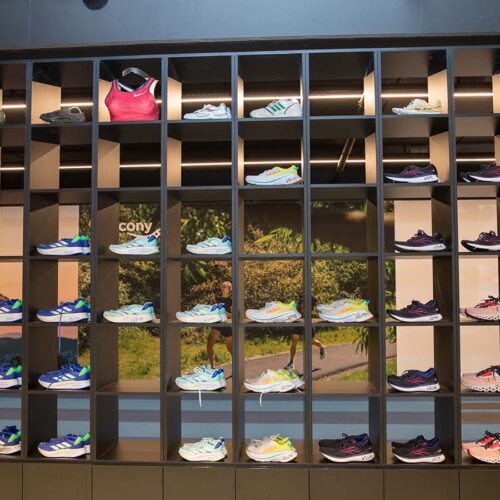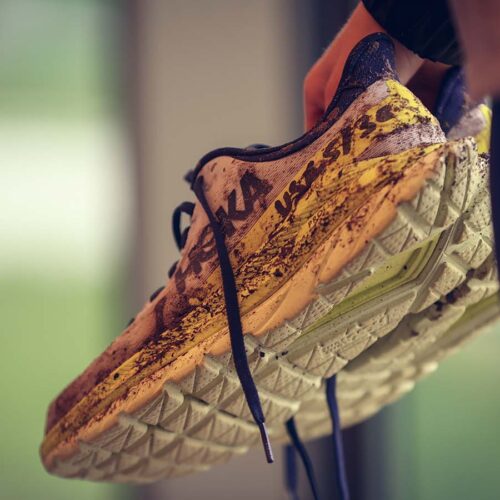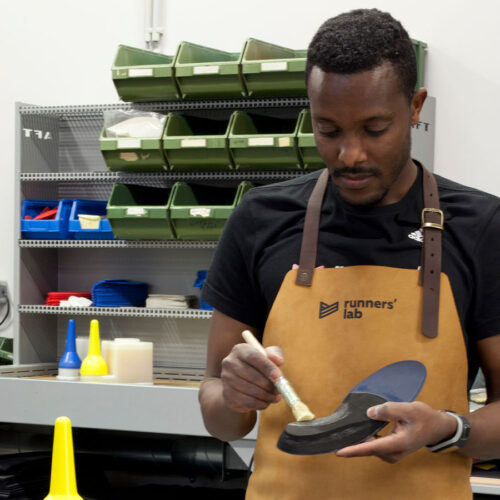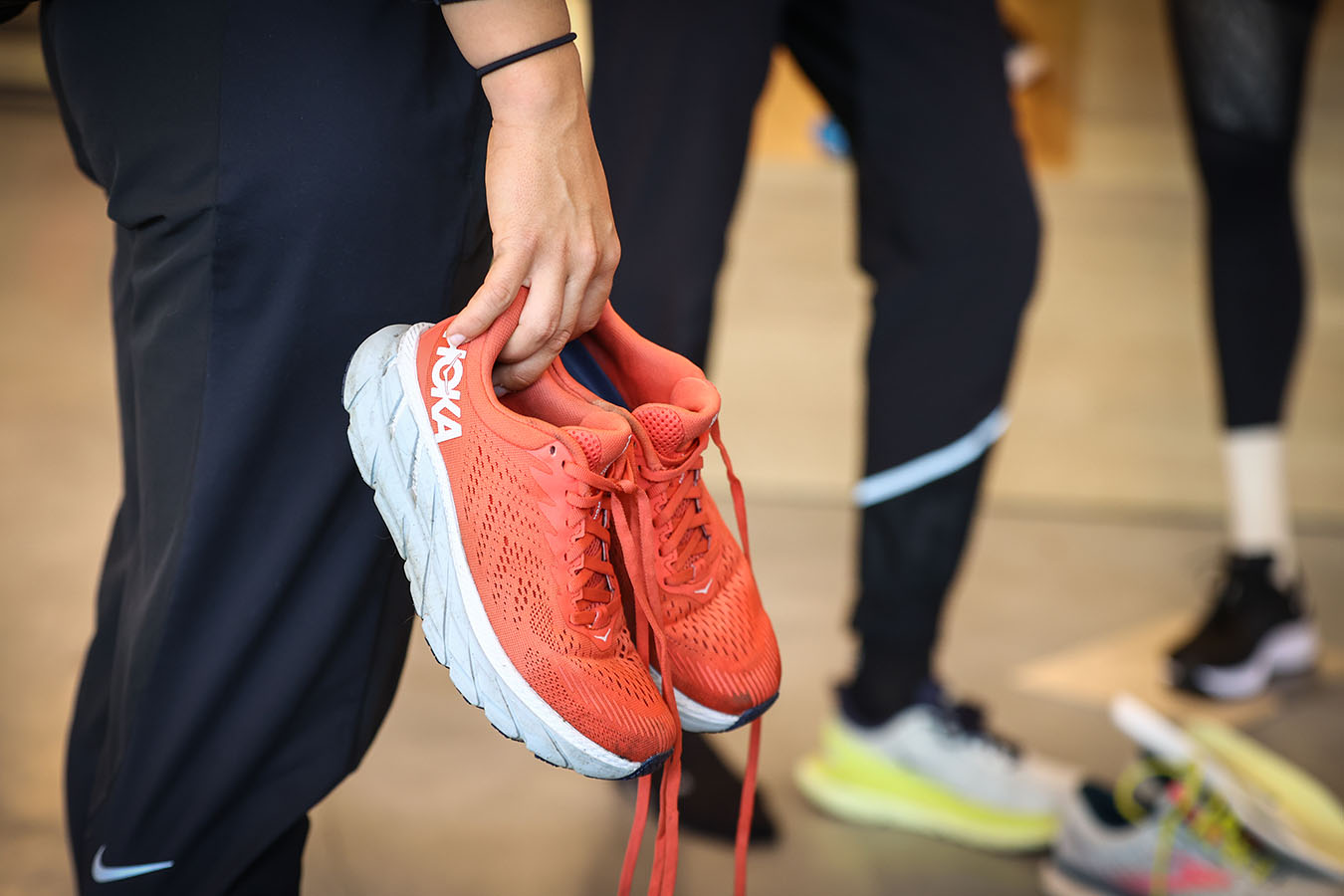It will never be a forever marriage between you and your running shoes. Fortunately, as relationship experts in the matter, we have tips galore on how to sensitively stretch the time between you two. Success guaranteed.
We had great times together. Neither of us is going to forget the endless treks through the meadowlands. But don’t delude yourself, they won’t come back. It’s done putting you on the first place. Because let’s face it, and I think you realize it too, it’s over. Time for new running shoes (and a bevy of tips to keep it from turning into a break-up this soon).
Tip #1: Walk the occasional crooked skate. Rotate your running shoes.
Your running shoes deserve their moment of rest now and then. Especially when you’re flying from one workout into another. Do you run more than three times a week? Then it is highly recommended to alternate between several pairs of running shoes. That way, the soft edge you’ve fallen for so much, the cushioning material, can regain its original shape and guarantee the cushioning you’re used to. Another advantage: your shoes have more time to deal with the sweat your feet produced. With any luck, the same applies to (sweat) odors.
Tip #2: Monitor his doings closely. Record mileage.
How many kilometers can I run with my running shoes ? We can’t put an exact number on that. This is closely related to your running style, the surface you run on, the model of shoe, your body weight… A good guideline to base yourself on is an average of 700 to 1,000 km per pair of running shoes, although different rules apply to typical competition shoes. You can track mileage very easily these days in running apps like Strava, Garmin Connect… That way, you get a good indication of the remaining life of your shoes.
At first glance, don’t your running shoes tell you that they are in the autumn of their career? Then your body probably does tell you by sudden pains that you never had before. Because the more miles you ran with the shoes, the more difficult it is for the cushioning material to rebound. Compare it to a brick you put on a sponge. It doesn’t spring back either.

Tip #3: Don’t expect it to be able to do everything. It’s just a running shoe.
Running shoes are made for running. Makes sense right? But – there’s the “but” – not to play tennis, padel or something like that. Are your running shoes showing wear in abnormal places? If so, it is probably due to the dragging and lateral movements that are inevitable during these sports.
Also distinguish between trail shoes and road running shoes. Running shoes lack the grip and technical details to effortlessly run over rocky, unstable, muddy stretches. Running shoes lack the grip and technical details to effortlessly run over rocky, unstable, muddy stretches. So leave each shoe in its own strength. The longer they last.
Tip #4: Treat your companion with care and respect. Clean your shoes and avoid heat sources.
The upper of your running shoes went through an evolution in recent years. The trend of “everything must be lighter and faster” was carried through into the upper. This certainly has its advantages in terms of comfort, but it also causes the material to tear at an earlier stage.
You can make sure it doesn’t come to that. For example, by properly maintaining your shoes. Are your shoes dirty? Then friction can occur between the dirty particles and the material. Cracks can quickly follow. Take a brush, a bucket of water and possibly some detergent to wash away the dirt. Scrubbing. What you should definitely not do is put your running shoes in the washing machine or place them on the heater. The heat will cause the glue to loosen and your shoes to break down faster. So let them dry naturally, use a shoe dryer or apply the old trick with a firm wad of newspaper.
A running sock also works wonders. In fact, cracks in the upper are more likely to occur at the level of the toes. With a good sock that is slightly thicker at the toes, there is less chance of friction with the upper. Another piece of wise advice: trim your toenails regularly. During (long) endurance runs, your toes can curl up, causing long nails to scrape up the material of the shoe from the inside.
Experiencing rapid heel wear? Then make sure your laces are loose enough so you can easily put on and take off the shoe. Otherwise, the fabric may tear on the inside of the heel.


Tip 5: Don’t hesitate to glue the pieces between you. Get your running shoes repaired.
Be aware that not all damage is irreparable. At Runners’ lab, we have a workshop where we perform shoe repairs. In Abdi’s hands, your running shoes are safe. In many cases, he can repair cracks in the upper, repair lace holes, add leather tips, reinforce the material in the heel and even put new rubber on the outsole of your shoe. Note that the latter is recommended only when the damping material is still okay.
Thinking about a break-up? Enlist our expertise.
Any other tips? Undoubtedly. But these are our five basic tips. Do you still have a specific question about your running shoes and their maintenance? Or do you want to know if it still makes sense to maintain your relationship? Then feel free to call on our expertise and stop by the store with your running shoes. Then we can tell you how long your shoes will last or we can judge if your shoes are in need of a refurbishment from Abdi. Not able to get to the store? Forward a photo to our WhatsApp Live Chat (+32 479 05 65 99) so we can assist you remotely.

